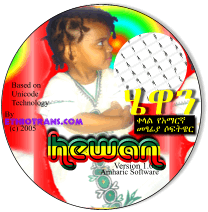
SYDNEY: The discovery of an infant human ancestor, dubbed 'Lucy's baby', will shake up our understanding of human evolution, according to its finders in Dikika, Ethiopia.
Two articles published today in the British journal Nature identified the fossil remains - the oldest and most complete infant skeleton found to date - as those of a three-year-old girl who lived 3.3 million years ago. She belongs to the species Australopithecus afarensis, of which the iconic adult skeleton, nicknamed 'Lucy', is also a member.
"The Dikika girl stands as one of the major discoveries in the history of palaeoanthropology," research team leader Zeresenay Alemseged said, citing the remarkably well-preserved condition of the bones, the geological age and completeness of the specimen.
"It's impossible to overstate the importance of the specimen," said Charles Lockwood, an anthropologist at University College London. "There is a remarkable amount of new information here."
Researchers think that the child's more or less intact body was covered by sandstone sediments in flood waters shortly after death, thus preserving the skeleton.
Infant bones are more fragile than those of adults, and prior to this find, the only remains of young children of this geological age were insubstantial: a partial skull, a piece of jaw or some isolated teeth.
The Dikika discovery, in contrast, includes a complete skull, a sandstone impression of the brain, the entire torso and parts of the upper and lower limbs, making it "a veritable mine of information about a crucial stage in human evolutionary history," according to Bernard Wood, of the Department of Anthropology at George Washington University.
"The discoverers of the Dikika fossil have only just begun the task of capturing all the data contained in the specimen," said Wood. As the bones are cleaned, prepared and reconstructed as a skeleton, researchers hope to uncover new information about the growth and development of the individual and the species, and settle an old debate – how A. afarensis moved.
"This tremendous fossil will make us challenge many of the ideas we have about how and why we came to walk on two feet," said Simon Underdown, senior lecturer in biological anthropology at Oxford Brookes University.
Initial analysis of the Dikika girl confirms that the lower body was adapted for walking upright, like later human ancestors, but the shoulder blades resemble those of a gorilla and the fingerbones are curved like those of a chimpanzee. These features suggest the possibility that A. afarensis retained the ability to climb trees and swing through branches as well as walking on two legs.
A multidisciplinary team of international scientists, led by Alemseged of the Max Planck Institute in Leipzig, Germany, began working at the Dikika site in the Afar region of north-eastern Ethiopia in 1999. The site is located on the opposite side of the Awash River to the Hadar site, where Lucy was unearthed in 1974.
A visitor to Dikika, Tilahun Gebreselassie, an Ethiopian government representative, spotted the skull and partial skeleton of the Dikika girl on a steep hillside on 10 December 2000. Over four successive field seasons of searching and sifting, the researchers unearthed a near-complete skeleton, piece by piece.
At the time of discovery, most of the upper skeleton was encased in a sandstone slab. Alemseged has spent thousands of hours over the past five years preparing the fossil for study, a painstaking process involving removal of the stone material from the delicate bones with dental instruments.
Researchers have also performed CT (computerised tomography) scans of the slab to examine the teeth in the skull, allowing them to determine the sex and age of the specimen at the time of death.


No comments:
Post a Comment